

|
BOTTING NET |
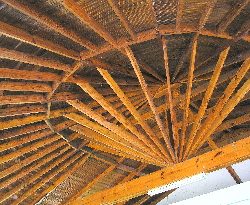 Ceiling above the lay visitor dining area. This was once the stage Pope John Paul II used in 1979 in Shea stadium. This is the underside of the then stage. | 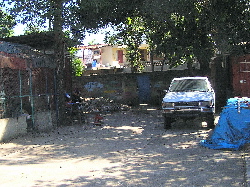 Gate from Brother's area to Nuns area and their school for deaf and dumb children. This is one of the locked gates I had to pass thru to get to my room. We had one set of keys for 3 people, so had to coordinate our trips back and forth. | 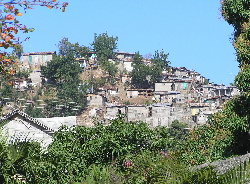 View over the wall from the adult patient grounds to adjoining homes in Cap Hatien. |
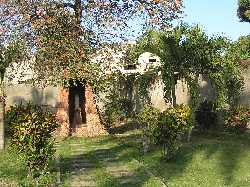 Grotto on the patient grounds | 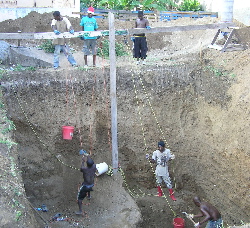 Construction of a septic tank to handle some new expansion. The Brothers have their own well and waste disposal in the compound. |  Smoke from neighbors outside the compound burning garbage. The Brothers burn their garbage too. |
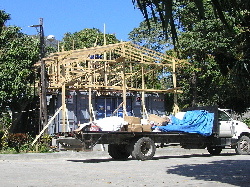 Brothers constructing a roof over 3 shipping containers to increase food storage. | 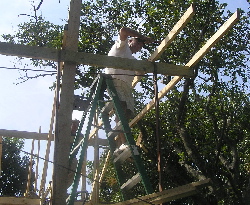 Mark, one of the 3 lay visitors, works on container roof. He was also working to establish a new local school that will be high tech and bookless. The school will make use of Medika Mamba a high nutrition, locally made food. |  Locked gate to the patient area |
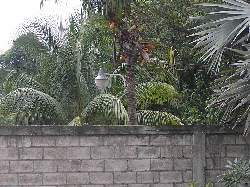 On a lighter note: my favorite lightpole! | 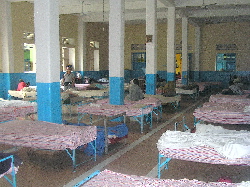 Men patients' dorm area | 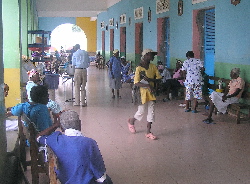 Common porch area for adults. This is used for patient exams, and treatment; feeding (see large pot in center); and patient fresh air and exercise. |
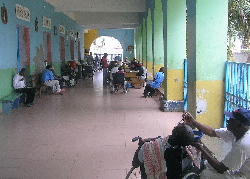 Lunch time. These patients, about 120 adults & 65 children (in a separate area), are all without any family or abandoned by their families | 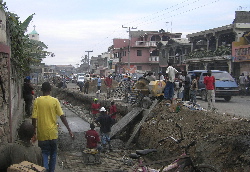 Street scene just outside Nun's street gate | 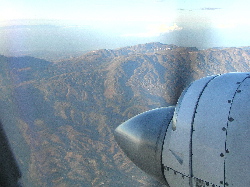 Mission done. Heading back to Port au Prince. Much of the country is without vegetation |